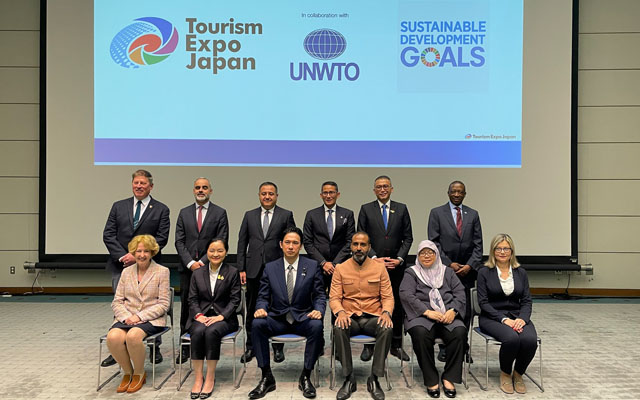With global tourism on course to recover almost 90 per cent by the end of 2023, according to UNWTO, several Asian countries are outlining how they are developing their tourism offerings to provide more value from 2024.
Country representatives outlined their plans at Tourism Expo Japan, where they told attendees that tourism can help grow economies, aid social issues and preserve cultural heritage, while also being more sustainable than ever before.

“The pandemic has hit the reset button to make tourism a driver of economic and sustainable growth,” said Sudawan Wangsuphakijkosol, minister of Thailand’s Ministry of Tourism and Sports, noting that Thailand’s tourism agenda prioritises crisis preparedness, quality of travel and alignment with the UN’s Sustainable Development Goals.
India also considers tourism a “multiplier” that can advance economic activity, shared Roshan Thomas, director of India’s Ministry of Tourism, citing how tourists visiting the setting of movie Slumdog Millionaire have a positive impact on the micro-economy of Mumbai’s slums.
Looking ahead, India is developing agritourism opportunities for visitors and farmers, while recruiting more young people into destination management roles to support the future of the industry, Thomas shared.
Labour is also a priority for Japan, where demographic decline and low wage levels have left many positions that were vacated during the pandemic still unfilled, but there is hope that digitalisation efforts will help, said Ryusho Kato, vice-president of Japan’s Ministry of Land, Infrastructure, Transport and Tourism.
“Tourism is a pillar of our growth strategy and the key for regional revitalisation,” Kato added, pointing to the potential to preserve nature, enrich local areas and improve local pride by increasing the number of visitors to rural Japan.
Indonesia, too, is banking on rural tourism, which is seeing growth particularly in Bali, according to Sandiaga Uno, head of Indonesia’s Tourism & Creative Economy Agency.
“Travel now is more customised and localised, with people staying longer and spending more locally,” Uno said.
Domestic tourism in Indonesia is already higher than in 2019 and international tourism has been rebounding strongly, prompting the government to increase its target to 10–11 million inbound arrivals by year-end, up from the initial target of 8.5 million.
Indonesia’s green tourism is already “showing good early progress,” and the next stage is regenerative tourism that is responsible and eco-conscious while facilitating cultural preservation. Bali’s resorts will no longer be built in a “cookie-cutter manner”, and food loss and waste is being tackled, said Uno.
“Before Covid, our tourism was about the three S’s (sun, sea, sand) – now it’s about a different three S’s: serenity, sustainability and spirituality,” he added.
Relative newcomers to tourism are also anticipating further growth in the post-recovery period.
Mukhsinkhuja Abdurakhmonov, ambassador of Uzbekistan to Japan, reported that the country has tripled inbound tourism arrivals since 2017 and expects to welcome 10 million visitors annually by 2025 by improving infrastructure, accessibility, smart-tech and e-commerce services.
Brunei, meanwhile, is developing its tourism roadmap for 2025, which will focus on quality experiences, culture and adventure activities, said Tutiaty Abdul Wahab, permanent secretary of Brunei’s Ministry of Primary Resources and Tourism.




















